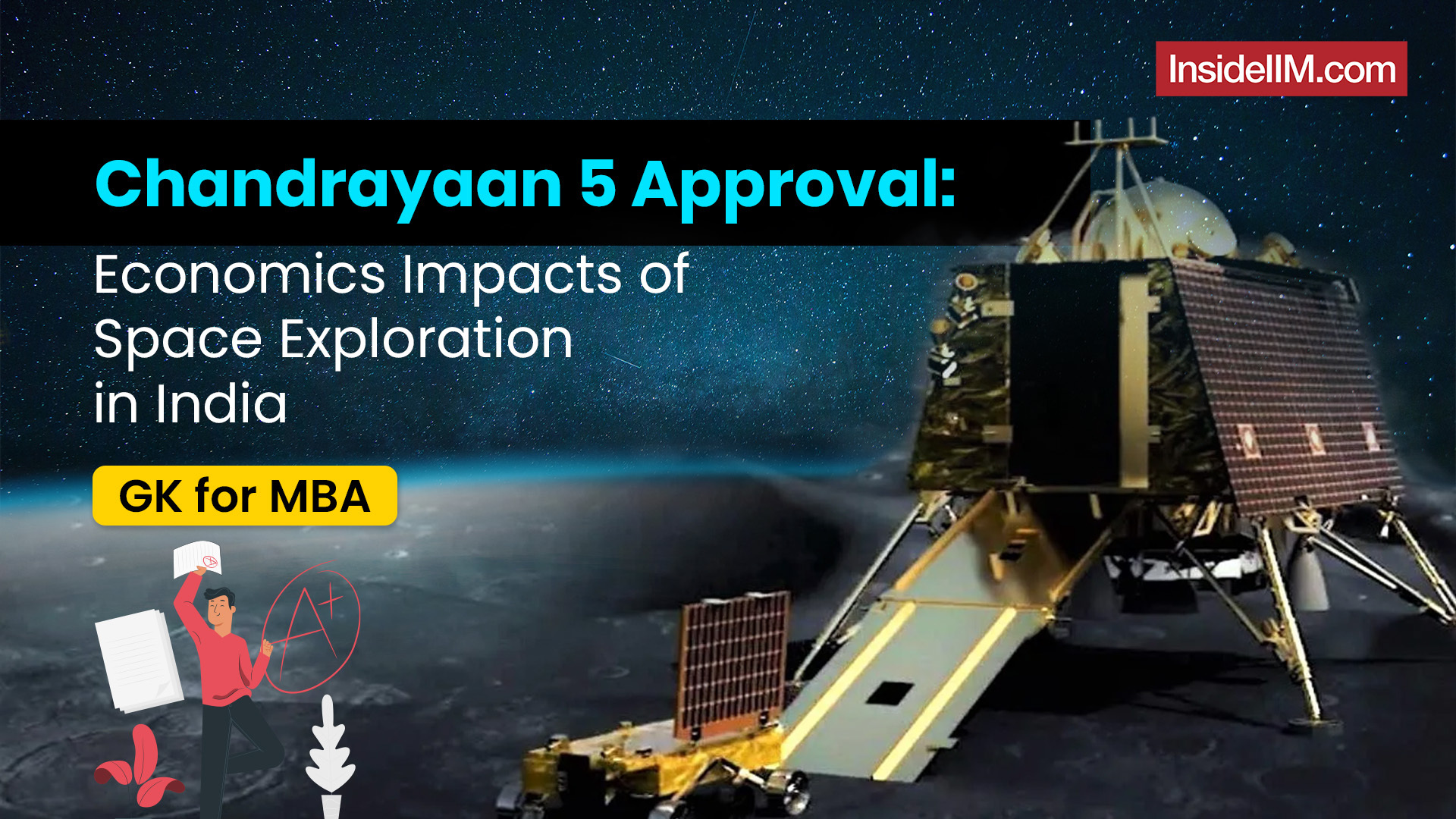Chandrayaan 5 Approval: Know About Chandrayaan’s History and Economic Impact of Space Exploration by India
 The Indian government has approved the Moon mission Chandrayaan 5. This will be undertaken in collaboration with the Japanese counterpart, JAXA, and is expected to launch in 2027/28. Like the previous lunar missions, Chandrayaan-5 aims to study the lunar surface on an advanced level. Chandrayaan-5 looks forward to deploying a heavier (250 Kg, 10x heavier than Chandrayan 3 rover) rover to enhance the moon's mapping, including better-resolution cameras.
The Indian government has approved the Moon mission Chandrayaan 5. This will be undertaken in collaboration with the Japanese counterpart, JAXA, and is expected to launch in 2027/28. Like the previous lunar missions, Chandrayaan-5 aims to study the lunar surface on an advanced level. Chandrayaan-5 looks forward to deploying a heavier (250 Kg, 10x heavier than Chandrayan 3 rover) rover to enhance the moon's mapping, including better-resolution cameras.
Also Read:
1. FMS Interview Transcripts Bank
2. How to tackle the extempore section in FMS interviews?
Know about the History of India’s Moon Missions
| Name | Year | Key Objective |
| Chandrayaan-1 | 2008 | Successful, in discovering the mineral composition of the moon, discovered water molecules on the surface of the moon |
| Chandrayaan-2 | 2019 | Lander Crashed. |
| Chandrayaan-3 | 2023 | World’s first successful soft landing on Moon’s South Pole. Aimed to secure soft landing and lander mobility and laser mapping. |
| Chandrayaan-4 | 2027 (expected) | Lunar soil sample collection and return to Earth |
| Chandrayaan-5 | 2028 (expected) | Advanced surface study with a 250 kg rover |
Deadline Approaching: Apply Today for HUL Foundation school
Kick Start your FMCG jouney with this free opportunity for CAT 2024 and XAT 2025 test takers
How does space exploration prove fruitful for India?
Having a stronghold in space not only creates a soft power for India in the global dynamics, space exploration has helped the Indian economy to grow manifold and holds a strong future influence with global partnerships.
- As FICCI-EY Reports, India’s space economy is expected to grow to 44 billion dollars by 2033. This will be about 8% of the global space economy. This will also increase exports to US 11 billion dollars in the same period.
- Not only India has ambitious projects like Chandrayan and Gaganyaan. ISRO/ India also launches satellites for the EU and the US generating revenue.
- Investments in the space sector have seen a multiplier effect of 2.54 times.
- In the last 10 years, the space sector created 4.7 million jobs and contributed 60 billion dollars to the GDP of India. It will support jobs in core engineering, logistics, and supply chain with a focus on in-house manufacturing while collaborating with space giants like NASA.
- The current valuation of the Indian Space Economy is 2% of the global economy at 8.4 billion dollars.
- The Indian government has announced a separate Rs. 1000 cr VC fund to be disbursed over the next 5 years to support startups in the sector.
- Apart from the direct benefits, it will also support agriculture and spectrum sectors with communication and weather mapping satellites.
Challenges faced by India:
- STEM and Academic Research and Collaborations highlighting skill gaps with labor requirements.
- Lack of Infrastructure.
- Though the government has allowed 100% FDI, the capital remains a problem. Additionally, private-sector collaborations within India are still in question. IN-SPACe (Indian National Space Promotion and Authorization Centre) works for private sector encouragement.
- Importing raw materials for space technology development and manufacturing is 12 times costlier than importing outputs.
Also Read:
- IIM Bangalore PI Transcripts
- IIM K PI Transcripts
- TISS HRM and LR Summer Placements Report
- HUL Foundation School Student Experiences- Participate now to get an edge in your MBA Journey!






